Arrow Rock consists of a small historic town, a bit like Old Deerfield, as there are restored buildings open to the public mixed in with private residences and businesses (some of which are in the historic buildings). There is also a small but very nice campground within walking distance of the town, and some scattered sites of interest, such as the old river ford.
I was surprised by the number and variety of artifacts in the Visitor’s Center—really a small interpretive museum tracing the history of the area from the native tribes to the decline of the river trade routes. Not surprisingly, this area was a major trading hub long before the Europeans arrived, with easy river access to the north, east, and south. Pre-Civil War, it was an important staging point for people heading west on the Santa Fe Trail.
And the town really is charming:
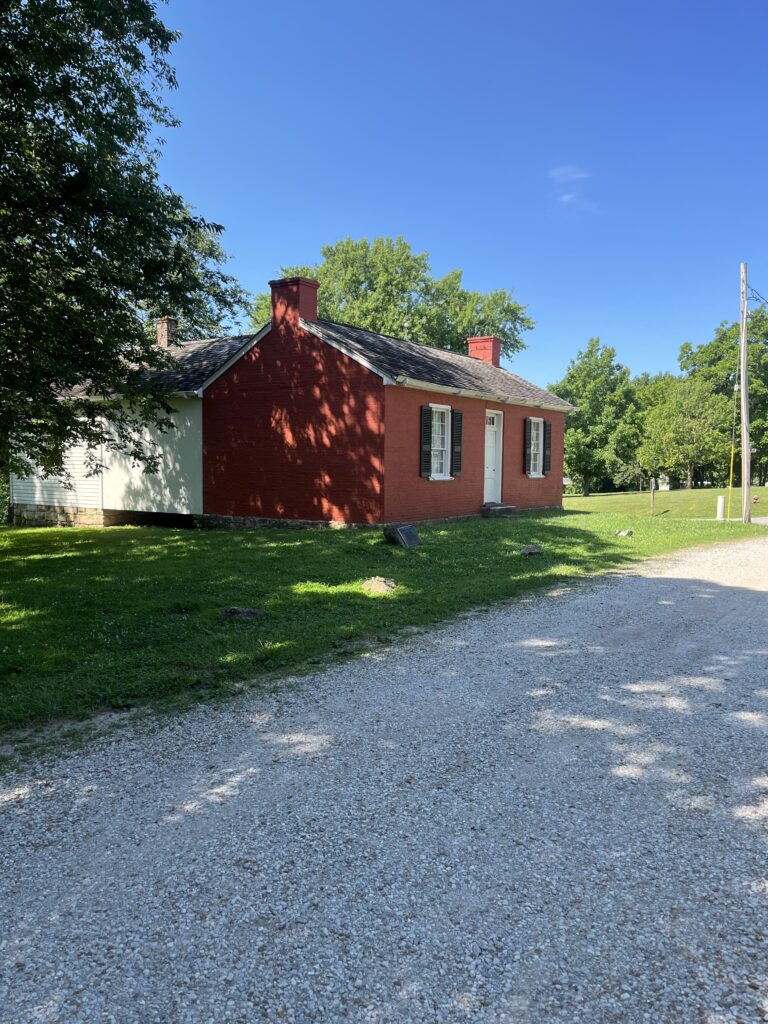
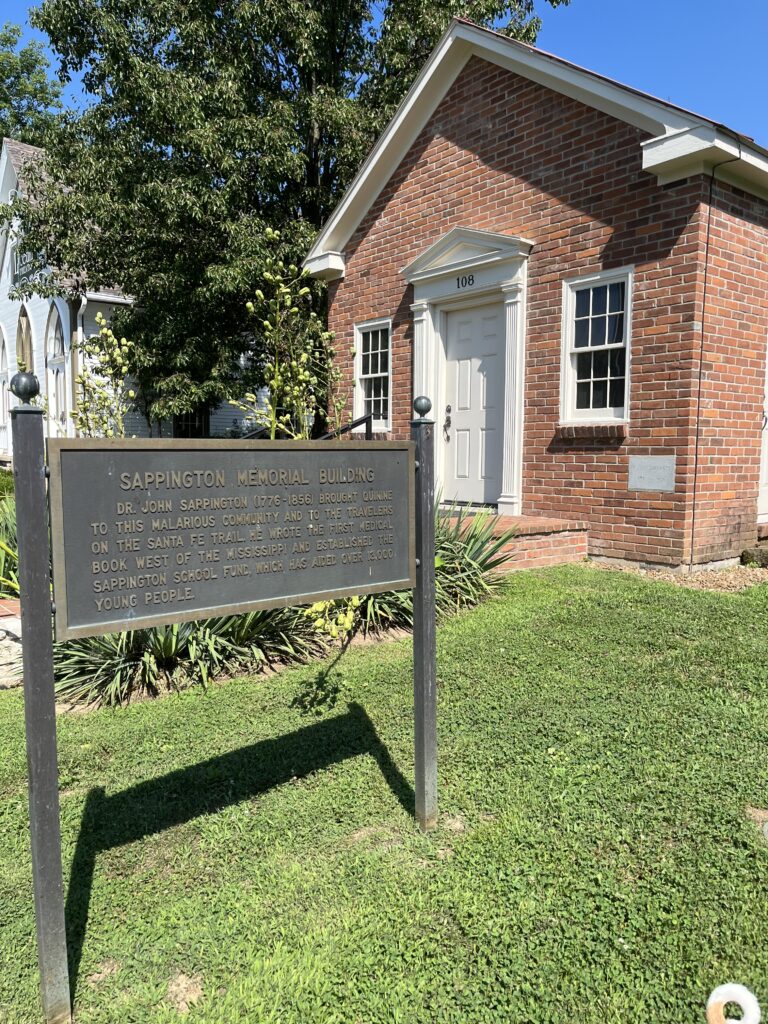
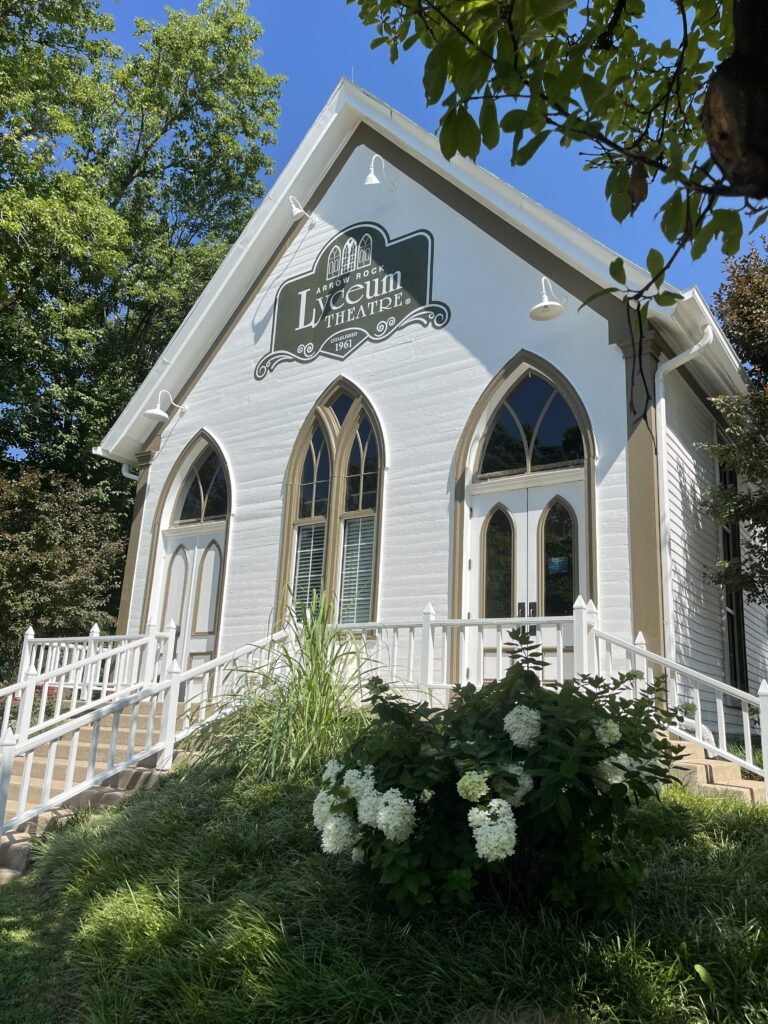
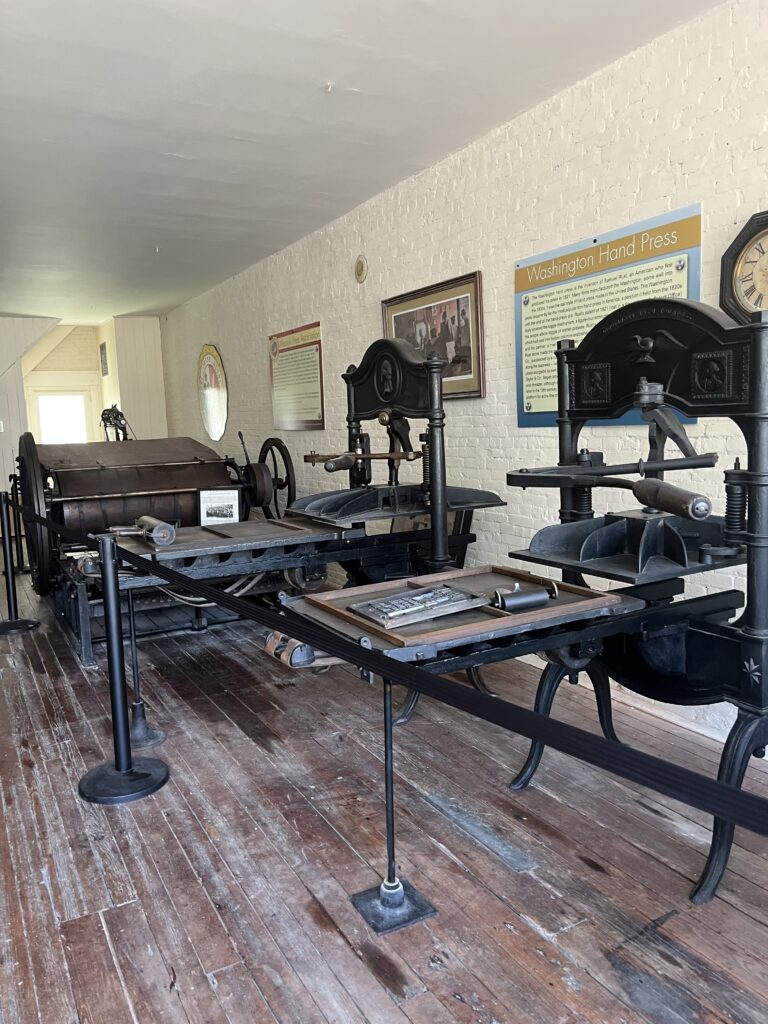
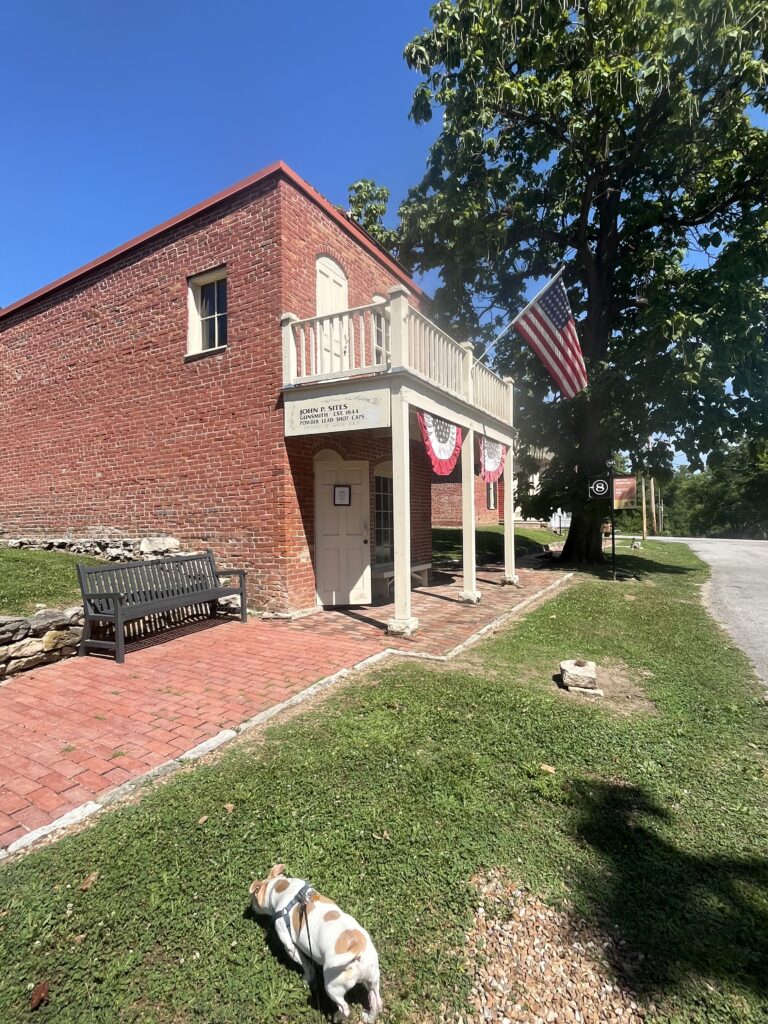
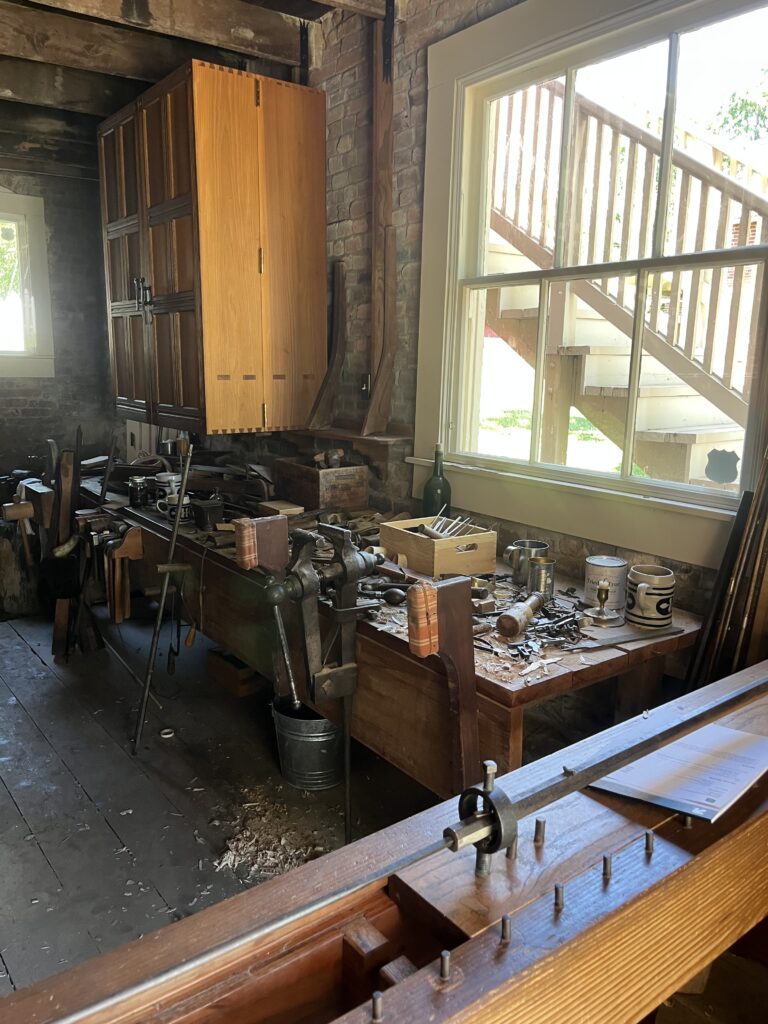
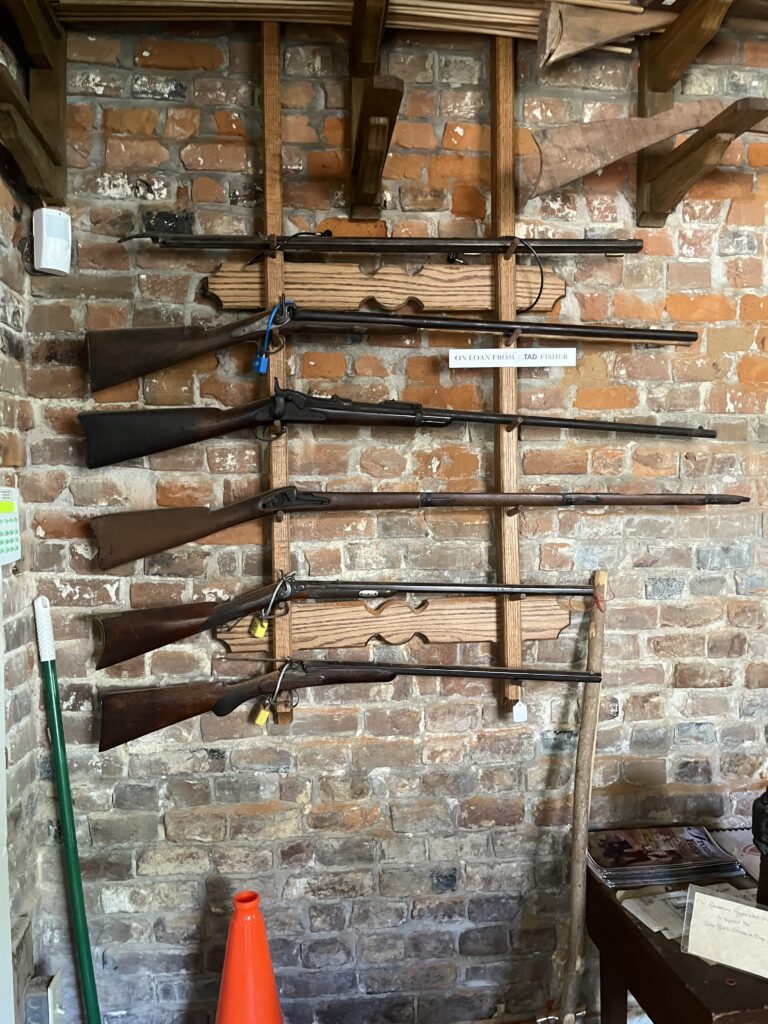
In the gunsmith’s shop, I ran into one of the trustees of the Friends of Arrow Rock, who proceeded to gift me with his encyclopedic knowledge of the shop, John Sites, and the trials and tribulations of trying to make a go of an historic site that was (quite honestly) in the middle of nowhere. As a former fundraiser, I have a sympathetic ear for such woes, but I did finally manage to extricate myself and walked across the street, where I enjoyed a really delicious chicken salad sandwich on croissant (just the thing for a day in the ‘90s).
As with any historic town worth the mention, Arrow Rock has its famous sons. Dr. John Sappington (1776-1856) is credited with developing and manufacturing quinine pills to successfully treat malaria. He also wrote the first first medical book west of the Mississippi River, The Theory and Treatment of Fevers. And George Caleb Bingham (1811-1879) was a well-known 19th century painter of American frontier life along the Missouri River.
Back at camp, I kept seeing an emaciated tabby cat hanging around the campsites. Being the animal softie that I am, I immediately tried to help him (her?). But my attempts to entice the cat with food only sent it scurrying away to the safety of the underbrush. Finally, one evening as I walked past with Moe, I saw the cat near my site. I told it I would feed it if it would stop running away. To my surprise, when I looked back, the cat was following me. I got some raw hamburger out of the fridge and tossed a piece near it. In a flash, it had grabbed the meat and fled with it into the woods. I managed to provide it with a few more chunks of food before I had to leave. Poor thing!
The camp host, Missy, was a delight, and we had a few conversations in between her rounds of the campground. As her other job is interior painting, I left her with my copy of Color: A History of the Palette in the hopes she would enjoy it as I did.